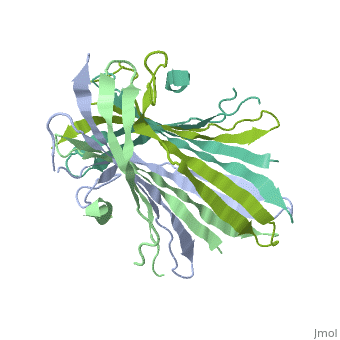User:Vinícius M. Neto/Sandbox 1
From Proteopedia
(Difference between revisions)
| Line 18: | Line 18: | ||
Fibroin oligomerization is deeply afected by the pH. Naturaly, during the silk spinning process, the fiber is subjected to a decreasing pH gradient from the anterior to the posterior part of the silk gland, which triggers the gelation of the condensed fibroin. In particular, the FibNT exists in a random coil state, which prevents premature formation of β-sheets. As the pH decreases to around 6.0, FibNT undergoes a structural transition to form β-sheets. | Fibroin oligomerization is deeply afected by the pH. Naturaly, during the silk spinning process, the fiber is subjected to a decreasing pH gradient from the anterior to the posterior part of the silk gland, which triggers the gelation of the condensed fibroin. In particular, the FibNT exists in a random coil state, which prevents premature formation of β-sheets. As the pH decreases to around 6.0, FibNT undergoes a structural transition to form β-sheets. | ||
| - | + | The interation between the acidic residues of FibNT may play an important role in this behavior. Some of these may have their pKa values up-shifted near the transition point and therefore ionize at neutral pH. This would hinder the protein folding and assembly processes due to charge repulsion. For instance, the hydrogen bonds formed by Glu56 and Asp100 with Asp44 and Glu98 respectively could be broken in higher pH environements, destabilizing the β-sheets conformations. | |
| - | + | ||
== Relevance == | == Relevance == | ||
Revision as of 05:01, 18 June 2025
Your Heading Here (maybe something like 'Structure')
| |||||||||||
References
- ↑ Hanson, R. M., Prilusky, J., Renjian, Z., Nakane, T. and Sussman, J. L. (2013), JSmol and the Next-Generation Web-Based Representation of 3D Molecular Structure as Applied to Proteopedia. Isr. J. Chem., 53:207-216. doi:http://dx.doi.org/10.1002/ijch.201300024
- ↑ Herraez A. Biomolecules in the computer: Jmol to the rescue. Biochem Mol Biol Educ. 2006 Jul;34(4):255-61. doi: 10.1002/bmb.2006.494034042644. PMID:21638687 doi:10.1002/bmb.2006.494034042644

